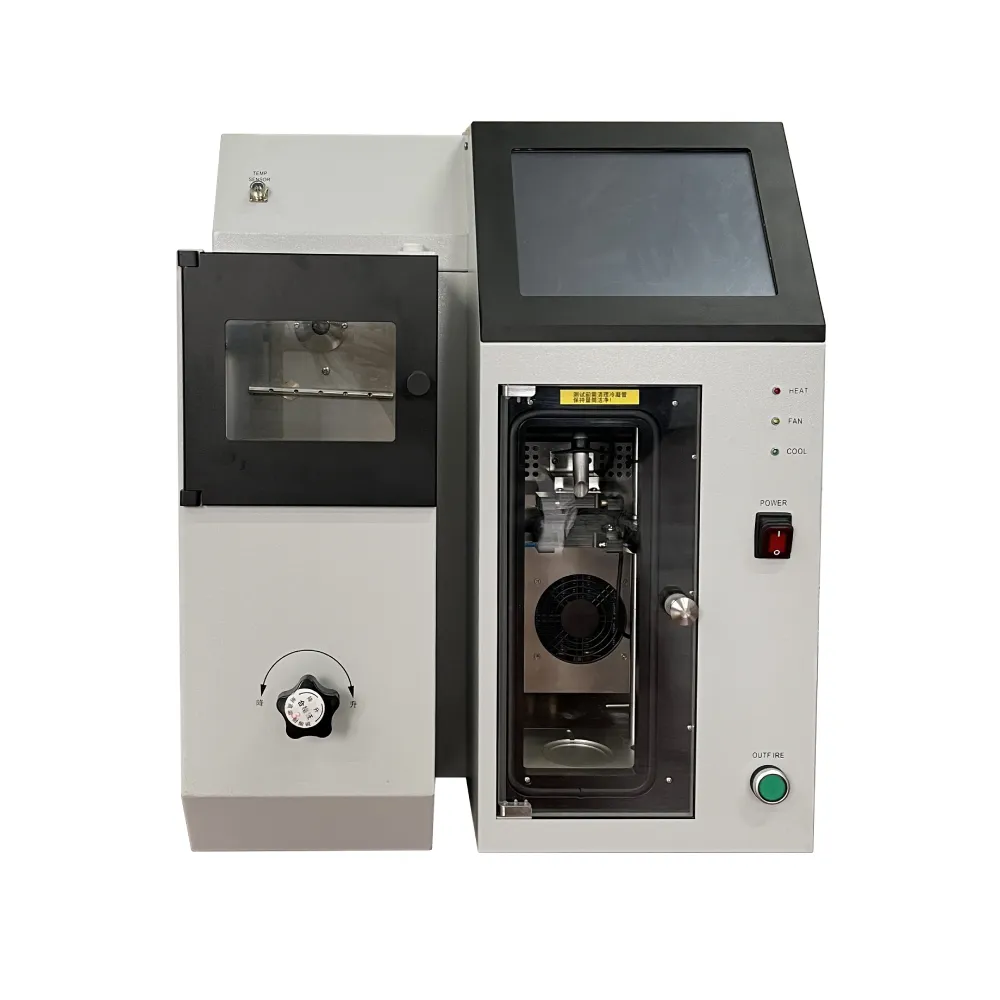TEL:
+86-0312-3189593
 English
English

Telephone:0312-3189593

Email:sales@oil-tester.com

-
 Afrikaans
Afrikaans -
 Albanian
Albanian -
 Amharic
Amharic -
 Arabic
Arabic -
 Armenian
Armenian -
 Azerbaijani
Azerbaijani -
 Basque
Basque -
 Belarusian
Belarusian -
 Bengali
Bengali -
 Bosnian
Bosnian -
 Bulgarian
Bulgarian -
 Catalan
Catalan -
 Cebuano
Cebuano -
 China
China -
 China (Taiwan)
China (Taiwan) -
 Corsican
Corsican -
 Croatian
Croatian -
 Czech
Czech -
 Danish
Danish -
 Dutch
Dutch -
 English
English -
 Esperanto
Esperanto -
 Estonian
Estonian -
 Finnish
Finnish -
 French
French -
 Frisian
Frisian -
 Galician
Galician -
 Georgian
Georgian -
 German
German -
 Greek
Greek -
 Gujarati
Gujarati -
 Haitian Creole
Haitian Creole -
 hausa
hausa -
 hawaiian
hawaiian -
 Hebrew
Hebrew -
 Hindi
Hindi -
 Miao
Miao -
 Hungarian
Hungarian -
 Icelandic
Icelandic -
 igbo
igbo -
 Indonesian
Indonesian -
 irish
irish -
 Italian
Italian -
 Japanese
Japanese -
 Javanese
Javanese -
 Kannada
Kannada -
 kazakh
kazakh -
 Khmer
Khmer -
 Rwandese
Rwandese -
 Korean
Korean -
 Kurdish
Kurdish -
 Kyrgyz
Kyrgyz -
 Lao
Lao -
 Latin
Latin -
 Latvian
Latvian -
 Lithuanian
Lithuanian -
 Luxembourgish
Luxembourgish -
 Macedonian
Macedonian -
 Malgashi
Malgashi -
 Malay
Malay -
 Malayalam
Malayalam -
 Maltese
Maltese -
 Maori
Maori -
 Marathi
Marathi -
 Mongolian
Mongolian -
 Myanmar
Myanmar -
 Nepali
Nepali -
 Norwegian
Norwegian -
 Norwegian
Norwegian -
 Occitan
Occitan -
 Pashto
Pashto -
 Persian
Persian -
 Polish
Polish -
 Portuguese
Portuguese -
 Punjabi
Punjabi -
 Romanian
Romanian -
 Russian
Russian -
 Samoan
Samoan -
 Scottish Gaelic
Scottish Gaelic -
 Serbian
Serbian -
 Sesotho
Sesotho -
 Shona
Shona -
 Sindhi
Sindhi -
 Sinhala
Sinhala -
 Slovak
Slovak -
 Slovenian
Slovenian -
 Somali
Somali -
 Spanish
Spanish -
 Sundanese
Sundanese -
 Swahili
Swahili -
 Swedish
Swedish -
 Tagalog
Tagalog -
 Tajik
Tajik -
 Tamil
Tamil -
 Tatar
Tatar -
 Telugu
Telugu -
 Thai
Thai -
 Turkish
Turkish -
 Turkmen
Turkmen -
 Ukrainian
Ukrainian -
 Urdu
Urdu -
 Uighur
Uighur -
 Uzbek
Uzbek -
 Vietnamese
Vietnamese -
 Welsh
Welsh -
 Bantu
Bantu -
 Yiddish
Yiddish -
 Yoruba
Yoruba -
 Zulu
Zulu
Fev . 04, 2025 04:13
Back to list
bdv transformer test
Differential stability testing in transformers stands as a pillar of reliability assurance in electrical distribution systems. The role of transformers in ensuring efficient energy transfer cannot be overstated. However, the inherent stressors from electrical surges, thermal variances, and mechanical vibrations necessitate rigorous testing protocols to maintain operational longevity and performance.
Trustworthiness, especially when discussing differential stability in transformers, hinges on transparency and thorough documentation. High-caliber firms ensure that every step, from initial testing to the final analysis, is meticulously recorded. These records not only provide peace of mind to clients but also create a robust database for future reference and technology advancement. Brown's Electrical Systems, a leader in transformer evaluation, exemplifies these principles in practice. Utilizing cutting-edge technology, their team of certified engineers conducts comprehensive differential stability tests that go beyond the surface-level assessments. Their approach integrates real-time monitoring systems, offering clients an unprecedented view into the ongoing health of their transformers. This proactive strategy not only reinforces client confidence but also minimizes downtime, enhancing overall system efficiency. Brown's field expertise highlights the difference between routine testing and a profound understanding of transformer mechanics and system integration. Their customized testing solutions are capable of accommodating specific client needs, whether it involves adapting to unique environmental conditions or aligning with particular regulatory requirements. In conclusion, the differential stability test of transformers is more than a technical procedure; it is a crucial component of power system sustainability and safety. Ensuring transformers remain stable under varying load conditions demands both advanced technical knowledge and practical experience. With the right expertise, such as that demonstrated by industry leaders, transformers can serve reliably for decades, providing the backbone for our modern electrical infrastructure. As the demand for efficient energy systems continues to grow, so too will the importance of rigorous and authoritative differential stability testing in maintaining global energy security.


Trustworthiness, especially when discussing differential stability in transformers, hinges on transparency and thorough documentation. High-caliber firms ensure that every step, from initial testing to the final analysis, is meticulously recorded. These records not only provide peace of mind to clients but also create a robust database for future reference and technology advancement. Brown's Electrical Systems, a leader in transformer evaluation, exemplifies these principles in practice. Utilizing cutting-edge technology, their team of certified engineers conducts comprehensive differential stability tests that go beyond the surface-level assessments. Their approach integrates real-time monitoring systems, offering clients an unprecedented view into the ongoing health of their transformers. This proactive strategy not only reinforces client confidence but also minimizes downtime, enhancing overall system efficiency. Brown's field expertise highlights the difference between routine testing and a profound understanding of transformer mechanics and system integration. Their customized testing solutions are capable of accommodating specific client needs, whether it involves adapting to unique environmental conditions or aligning with particular regulatory requirements. In conclusion, the differential stability test of transformers is more than a technical procedure; it is a crucial component of power system sustainability and safety. Ensuring transformers remain stable under varying load conditions demands both advanced technical knowledge and practical experience. With the right expertise, such as that demonstrated by industry leaders, transformers can serve reliably for decades, providing the backbone for our modern electrical infrastructure. As the demand for efficient energy systems continues to grow, so too will the importance of rigorous and authoritative differential stability testing in maintaining global energy security.
Next:
Latest news
-
Testing Equipment Industry Sees Major Advancements in 2025: Smart & Precision Technologies Lead the WayNewsJun.06,2025
-
Applications of Direct Current Generators in Renewable Energy SystemsNewsJun.05,2025
-
Hipot Tester Calibration and Accuracy GuidelinesNewsJun.05,2025
-
Digital Circuit Breaker Analyzer Features and BenefitsNewsJun.05,2025
-
Benefits of Real-Time Power Quality Monitoring Devices for Industrial EfficiencyNewsJun.05,2025
-
Earth Fault Loop Testing in High-Rise Building Electrical SystemsNewsJun.05,2025



